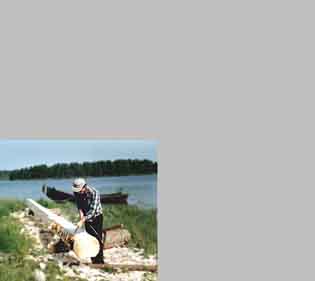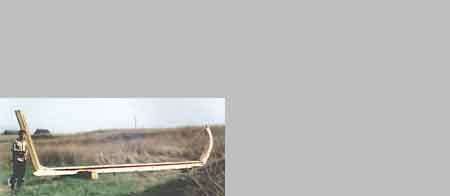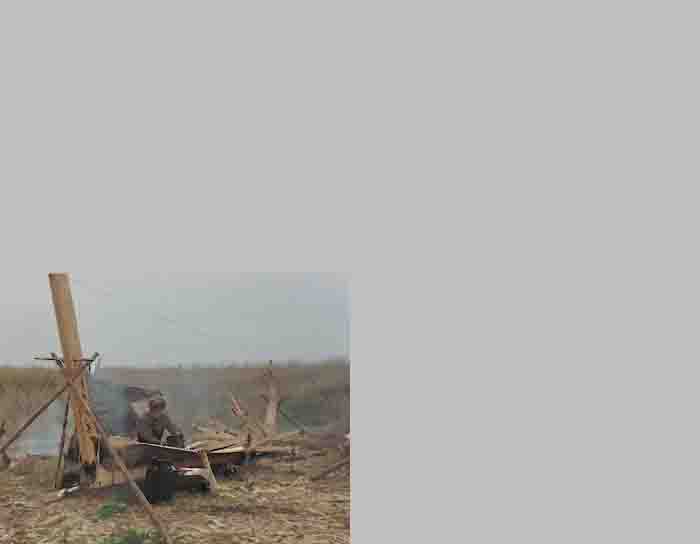|
|
|
|
|
|
|
|
|
Reconstruction first season (July-November 2001)

Full scale image (34Kb) Logging. July 2001. We had to find three spruces of 55-60cm stump diameter to get planks 35-45cm wide. Such a log has approx. 1.5 cubic meters volume and more then one ton weight when fresh. The spruces were found as close to the water as possible, we were only two people to shove them down into the lake. For modern things only an outboard engine was used on our boat, we had hand saws and axes for tools. To check if a tree is straight-grained before cutting it down, one can make a small cut through its bark and tear a small splinter off the wood surface. The direction in which the splinter goes will show the direction of grains. It would be also a good practice to check if a tree is rotten inside by boring it with an auger before felling. |

Full scale image (37Kb) The keel is carved out of a spruce log ~10.5 meters long and 40cm thick. A string, rubbed with a piece of charcoal, was used to mark straight lines; all smaller marks were made with small charcoal sticks. Excellent marking coals can be manufactured by burning thin(4-8mm) birch twigs in a tightly closed tin, without access of air. The keel is T-shaped in crossection, it has wedged shapes at both ends to make joints with stern and stem posts. August 2001. |
 Full scale image(19Kb)
Full scale image(19Kb)Keel with stern and stem posts mounted. Total length is approx. 12 meters. August 2001. |
|

Full scale image (43Kb) First strake is bent, fitted to the keel and stems, and mounted by means of especial clamps and wedges. Now it is being sewn to the keel with spruce roots. October 2001. These planks are very wide -- wider then 35 cm, and their bending was an enormous problem. They were to be twisted almost to 90o along approx. 4 meters. In smaller boats with narrower and thinner strakes this is achieved comparatively easily, so I deemed in worst case I can reduce the shnjaka's strakes to ~20mm , slightly thicker then in small boat, and bend them just as easily. But it appeared that major obstacle to a twist is the plank's width, and not thickness -- inner tensions grow as the square of the width. Only 5th attempt was more or less successful, 4 planks cracked and were waisted. An impressing steaming technique has been developed, planks were heated between two long fires -- all this took more then one month. Later I found some information to the effect that first strakes in Pomor shnjakas were not bent, but axe-carved into the necessary shape out of chosen spiral-grained trunks. |
|
|
|
|
|
|
|
|
|
|
last update: February 2006 report problems with this page to ![]()